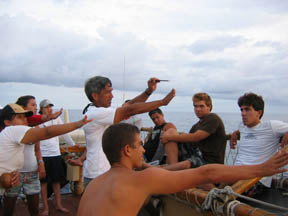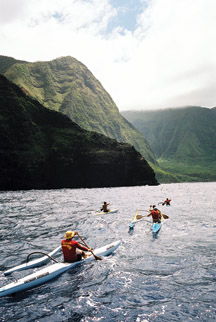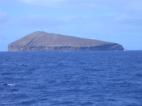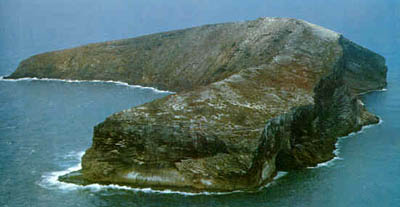 |
|
Kapu Na Keiki (Photo: learning navigation from Nainoa, by Ka'iulani Murphy.)
|
|
Mission We seek to expose the students to Hawai‘i’s ancestral tradition of deep-sea voyaging and non-instrument navigation. The hope is that the students will develop an appreciation for Hawai`i, its people and its cultural and ecological beauty, learn the importance of caring for our environment and natural resources, enjoy the gift of physical activity, challenge themselves, be inspired to explore, exercise leadership and service, and experience the values of compassion and giving. |
|
Goals For everyone involved to experience, learn and grow; to involve canoeing, voyaging and educational leadership collectively under the same mission; to make contributions to underprivileged children and our environment; to translate this model to canoe clubs and to the next generation of voyagers; and to use this as a process of developing on-going programs involving the ocean and culture. |
|
Paddling for the Children’s Justice Center (Photo: paddling the north coast of Moloka‘i, by Monte Costa.)
The students collected pledges per mile they paddled and the money they raised was for the Children’s Justice Center, which serves child victims of sexual abuse and severe physical abuse. Specifically, the money will help fund art therapy projects and purchase needed items such as back-packs, which are a part of the center’s clothes closet and which are given to children who must be removed from their homes and put into foster care. The students also made coastal paddles on Maui, Lana‘i, Kaho‘olawe, and Moloka‘i, as they moved up the island chain. The students of Kapu Na Keiki come from varied backgrounds and from several different schools, including Wai‘anae, Nanakuli, Roosevelt, Maryknoll, Punahou, Kamehameha and the charter school Halau Ku Mana. Kapu Na Keiki is a grassroots program, funded by donations from friends and family as well as contributions from Tesoro Hawai‘i Corporation and Mauna Kea Petroleum for escort boat fuel, Island Paddler, Patagonia, The Family Shop Silk Screen Printing, Kuki‘o resort and its beach expert Thibeart, Tiger Canoes, and the Kamehameha Schools Land Assets Division. |
|
Navigating to Ka‘ula (This article by Kathy Muneno appeared in Makai Ocean Lifestyle Magazine, August 2006. Photos: Kaula profile; Kaula aerial)
“I was shocked ‘cause we actually did it,” said Ka‘ulunahenahe Samson, 18 years old of Wai‘anae. She spotted the island first at 5:40am Tuesday July 25th, 2006. “Everybody was so shocked because everybody helped get us there. We felt so proud.” “I was super happy that young kids could actually find it. So proud of everybody that we did it,” remarked Waimea McKeague, 16 years old of Nanakuli. Thompson, who refrained from helping the students, and in fact challenged them to be sure of their estimations, saw his youth in them, “that wonderment of being able to use nature to guide you across the sea and the thrill of finding that destination you seek and in the process knowing you’re learning about something very special, being in the wake of your ancestors. Watching them search for Ka’ula was watching them grow into themselves.” “I think it’s gonna stay with me forever,” Waimea says. It was the first deep-sea sail for these eleven teenagers, 16 to 19 years old, from public, private and charter schools. They are a part of the Polynesian Voyaging Society’s program called Kapu Na Keiki. The program started two years ago with Thompson teaching them how to read nature’s clues and leading them on a statewide paddle in one and two-man canoes while raising money for abused children. They made it from Ka Lae (South Point), Hawai‘i Island, to O‘ahu over a series of weeks and weekends. All that was left was Kaua‘i and Ni‘ihau. But, with a voyage to Micronesia and Japan on the horizon and sea trials and crew training to be done, Thompson decided to conduct two months of intensive navigation classes and have them instead sail to Kaua‘i and Ni‘ihau, then on to Nihoa. But Daniel got in the way. Hurricane Daniel, that is.
Before contacting Taylor by radio “we would tell Nainoa where we think we are and he would say ‘are you sure? Is that what you think?’ Then we’d go back and double-check,” recalls Samson. Taylor was amazed and proud. When he compared their estimates to their actual GPS-plotted location he says they were “quite close,” but never told them so, of course. They sailed 75 miles,1/30th the distance to Tahiti. Thompson points out that when Hokule‘a voyages to Tahiti “the target we shoot for is the set of islands that screen Tahiti, 440 miles wide. Say the students were 4 miles off (that is not confirmed yet and Thompson feels it is likely an over-estimate), that would equal 120 miles (if they were sailing to Tahiti), which is way within the boundaries of finding the Tuamotu Archipelago. Are they prepared to find Tahiti? No way, but it’s a cool thought.” Ask Thompson “why teach them navigation?” and he unleashes a torrent of reasons. Non-instrument navigation, Thompson says, “gives them a sense of connection to Hawai‘i, it connects them to nature and bridges modern science and traditional knowledge. It challenges them, forces them to work as a team with family values, forces them to deal with the issue of fear, helps them to grow by using fear to keep them alert….it teaches them vision, values and community, everything that helps them grow and broaden their connection to the ocean and reconnect them to our heritage, culture and history and helps them learn how to succeed by taking on difficult challenges, through training, learning and preparation. It helps them to be more proud of themselves. It raises self-esteem through success. It helps them to look at who they are, where they’re going and helps them think of how they’re gonna get there. Also, we had them think about why Hawai‘i is so special - naturally, culturally and as a community. The voyaging process teaches values, about taking care of oneself, each other and the things that make Hawai‘i so special.” “I’ve matured. I’m no longer the kolohe kid. I’m much calmer now,” confides McKeague. Samson contemplates what she carries with her and sums it up with “the knowledge that we learned from Nainoa and trusting everyone else too.” She adds that “we were stoked that we were able to do that ‘cause we know, how many people are gonna get the chance to go on Hokule‘a and do that? Not too much. We were so happy to get the opportunity.” While on Kaua‘i the students were overwhelmingly embraced by the community and they gave back. They pulled weeds in the lo‘i at Waipa, conducted a beach clean-up at Hanalei and helped lash the canoe Na Mahoe. In addition to Thompson, their mentors were their watch captains, Bruce Blankenfeld, Ka‘iulani Murphy and Atwood Makanani who made sure they took care of Hokule‘a, because Hokule‘a takes care of them. The students wrote in journals, a requirement by Thompson. They had to answer his calculated questions such as “Where do you want to be in 20 years?” “How will you get there?” “What makes Hawai‘i unique?” “How do we keep it that way?” and the daunting “Who are you?” McKeague acknowledges “that’s a good question. I was thinking wow, who am I now. I’m myself, I’m a Hawaiian guy, but I don’t know. Maybe just another local boy from Nanakuli…who learned from the best.” And one who helped pull an island out of the sea. |
 Kapu Na Keiki ("Hold Sacred the Children") embodies a dream envisioned more than one year ago by navigator and educator Nainoa Thompson. This education program is inspired by Hawai`i and the Pacific’s voyaging and canoe paddling heritage as well as the importance of exploration and discovery that embodies the spirit of the voyaging canoe Hokule`a. Through canoes, we hope to create powerful learning experiences. We hope Kapu Na Keiki will challenge the students, inspire them to explore and care for the ocean, coral reefs, these islands and their communities and encourage the values of compassion, giving and service.We also hope that this experience will help the students in navigating through their lives and the choices they face as they form and achieve their dreams. The students are required share their experiences and what they’ve learned with other students; in that way they too become educators of this land and inspire others to explore and take ownership of the caring for Hawai`i.
Kapu Na Keiki ("Hold Sacred the Children") embodies a dream envisioned more than one year ago by navigator and educator Nainoa Thompson. This education program is inspired by Hawai`i and the Pacific’s voyaging and canoe paddling heritage as well as the importance of exploration and discovery that embodies the spirit of the voyaging canoe Hokule`a. Through canoes, we hope to create powerful learning experiences. We hope Kapu Na Keiki will challenge the students, inspire them to explore and care for the ocean, coral reefs, these islands and their communities and encourage the values of compassion, giving and service.We also hope that this experience will help the students in navigating through their lives and the choices they face as they form and achieve their dreams. The students are required share their experiences and what they’ve learned with other students; in that way they too become educators of this land and inspire others to explore and take ownership of the caring for Hawai`i.
 A dozen high school students spent spring break 2006 paddling one-man and two-man canoes 95 miles up the leeward coast of the island of Hawai‘i, much of the way with the voyaging canoe Hokule‘a in sight, watching over them like a mother over her keiki.
A dozen high school students spent spring break 2006 paddling one-man and two-man canoes 95 miles up the leeward coast of the island of Hawai‘i, much of the way with the voyaging canoe Hokule‘a in sight, watching over them like a mother over her keiki. The weather “was a gift,” says captain Nainoa Thompson. Wind to fill the sails and a crystal clear night. Hokupa‘a, the north star, shined bright, enabling eleven fledgling navigators to guide the Polynesian voyaging canoe Hokule‘a across the open ocean to the doorstep of a tiny island called Ka‘ula.
The weather “was a gift,” says captain Nainoa Thompson. Wind to fill the sails and a crystal clear night. Hokupa‘a, the north star, shined bright, enabling eleven fledgling navigators to guide the Polynesian voyaging canoe Hokule‘a across the open ocean to the doorstep of a tiny island called Ka‘ula. “Given the forecast for Daniel, the strength of the storm, time of arrival, there was no choice. It was too dangerous to consider Nihoa as planned, it was too far west and we’d be coming back into the storm,” Thompson said. So he looked at alternatives for a navigational challenge within reasonable safety parameters, and devised the plan to leave Hanalei before sunset on Monday July 24th and voyage to Ka‘ula, west of Ni‘ihau, instead. They had to first sail to a predetermined location out of sight of land, then turn toward Ka‘ula. If the students calculated speed, time, distance and location accurately purely by looking at the ocean and the heavens, they would see Ka‘ula by sunrise the next day. They worked in three watches and called in their estimated location to the escort boat captain Mike Taylor every hour on the hour.
“Given the forecast for Daniel, the strength of the storm, time of arrival, there was no choice. It was too dangerous to consider Nihoa as planned, it was too far west and we’d be coming back into the storm,” Thompson said. So he looked at alternatives for a navigational challenge within reasonable safety parameters, and devised the plan to leave Hanalei before sunset on Monday July 24th and voyage to Ka‘ula, west of Ni‘ihau, instead. They had to first sail to a predetermined location out of sight of land, then turn toward Ka‘ula. If the students calculated speed, time, distance and location accurately purely by looking at the ocean and the heavens, they would see Ka‘ula by sunrise the next day. They worked in three watches and called in their estimated location to the escort boat captain Mike Taylor every hour on the hour.